I have been looking to buy a AC-DC 5v power supply module to power a mains relay in a circuit I am making. I came across a couple of different models on eBay and am trying to understand their basic working design.
This one in particular has good resolution pictures. To my untrained eye, a lot of thought seems to have gone into the separation of the AC mains and DC output. The underside of the board (see second photo) shows that the PCB has been milled under the yellow thing (transformer?). However there are two other components next to this transformer(?); on one side is a black chip which I believe is an optocoupler (I looked up a part number from another photo I saw of the same board), but on the other side is a capacitor labelled C5.
My main question is what is the purpose of this C5, given that it seems to be going from the AC side to the DC side? Wouldn't that defeat the purpose of the separation? My guess is that the larger capacitors provide filtering, but I can't work out what C5 is doing there.
Secondary questions are how I should approach understanding a circuit like this? Is this a common design for a AC-DC power supply? Could you explain in simple terms what this circuit is doing?
Here is my guess of the circuit functioning: The power comes in and goes some kind of filtering and over-current protection (NTC thermistor). Then it passes into a full-wave rectifier (D4) and the black coils (another transformer?), in some order. I assume then that after this the voltage is a bit lower. The 400V cap on that side helps smooth this rectified output. There is an IC just visible on the top of the board under the black coils which I'm guessing does some PWM with feedback from the optocoupler driven by the DC output; this feeds the yellow transformer which then somehow induces a DC voltage on the other side (I thought that transformers only did AC-AC, but maybe this is not right?) Finally the output, which should be 5V at this stage, goes through some final caps for filtering and into the optocoupler for feedback. Is any of this right?
For what it's worth, the other power supply module I was looking at was this one which is a bit cheaper, but doesn't seem to have the same level of input filtering or isolation (also, no black coil thing?)

